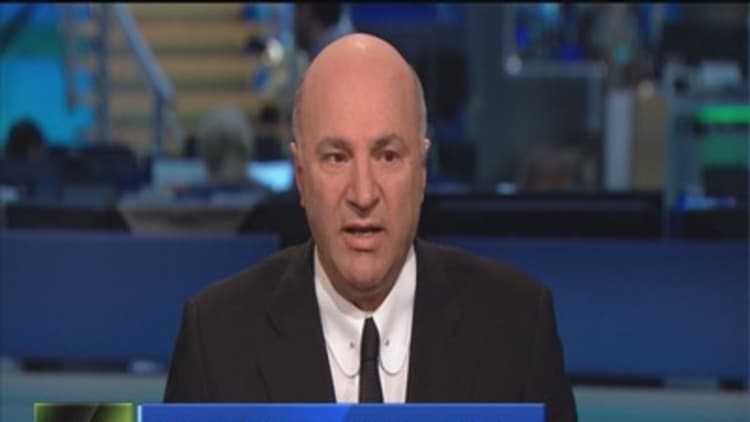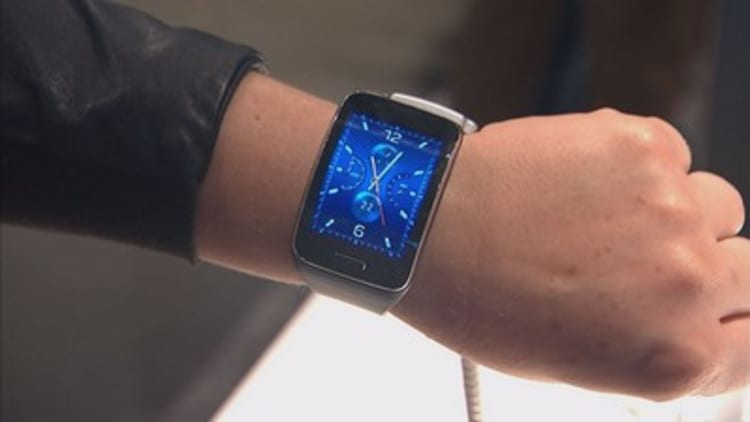


Apple loyalists have made their case for the stock so many ways during its 24 percent slide since July: It's the most profitable company on earth.
The iPhone is the most successful consumer product in history. Apple Watch and Apple Pay give Tim Cook a claim on the future of communication and commerce.
The shares are unaccountably cheap based on today's earnings, tomorrow's prospects and $200 billion in cash reserves.
None of those have stemmed the stock's descent.
So how about this: Apple stock is a decent bond, with an ownership slice of a dominant tech company attached as a bonus.
The drop in Apple shares has nudged their dividend yield above 2 percent for the first time since the spring of 2014. That's above, or about equal to, the yield on a handful of Apple-issued bonds that mature in the next one to five years. A couple of Apple senior notes that come due in 2020, for example, yield just below 2 percent right now, according to FactSet.
Apple has some $60 billion of debt outstanding, taken on as part of the company's strategy to return cash to shareholders through stock buybacks and dividends, without bringing home cash held overseas. With more cash on its books than debt outstanding, Apple is clearly an excellent credit risk — thus the slim rates it is able to pay on those bonds.
Still, the fact that Apple's stock yields more than some of its bonds is rather telling, and is rather anomalous (though not quite unique) for a company that's still — at least nominally — in growth mode.
By comparison, the overall S&P 500 now yields about 2.2 percent, while bonds of high-quality corporate issuers most comparable to S&P 500 companies yield near 3.5 percent.
The yield advantage held by Apple stock over some of its bonds is yet another signal that the market is pricing in minimal growth, if any, for Apple's top and bottom lines in the coming years. As Ari Levy discusses here, Wall Street has cooled on the Apple investment story, even as analysts continue to endorse the stock and the company's ongoing growth opportunities.
Investors, collectively, have been unwilling to pay up for lush current earnings, which could be the result of unsustainable profit margins. The market, too, has refused for years to "pay up" for Apple's cash trove — perhaps because there is virtually nothing very clever or compelling a management team can do with $200 billion in one or two strokes. And, of course, there is theoretically unlimited downside risk to the stock, while Apple's bonds are a virtual certainty to be repaid on time and in full.

Still, this situation shows that much of the financial risk has been drained away from Apple shares with this downdraft. While a 2 percent dividend yield won't serve as a failsafe cushion for the stock, Apple's payout will grow over time.
The current market environment has created a number of such cases, where stocks are viewed on some level as bond proxies in a yield-scarce world. Of course, across the long stretch of financial history until around 1960, stocks as a class almost always yielded more than safe bonds, as compensation for their greater risk. But in recent decades, focus on capital appreciation and other ways of rewarding shareholders have mostly kept equity yields underneath those of corporate bonds, except during market panics such as in 2008.
Now, though, the long bull market in bonds and the heavy investor flows into fixed-income funds that followed have compressed many high-grade corporate yields to below their issuer's dividend yields. In part, this is because different types of investors are drawn to each asset class, so few individuals are actively choosing between, say, Apple's stock and its senior unsecured notes due in May 2019.

While pure yield plays such as utilities and real estate investment trusts have stayed in heavy demand among income-seeking investors, shares of blue chip companies with growth challenges have been spurned, causing their dividend yields to drift higher.
Thomas Lee, research chief at investment-strategy shop Fundstrat Global Advisors, has been highlighting a handful of such stocks — with equity yields above their 10-year bond yields — as potential rebound candidates, including Exxon Mobil, Cisco Systems, International Business Machines, Procter & Gamble and Wal-Mart.
Apple's dividend yield is still about 0.9 percentage points below that of its 10-year paper, so the disparity is not quite as stark as in those names. Still, while Apple investors might well blanch at having their beloved core holding placed in a class with those aged, lumbering giants of 20th century capitalism, this is roughly the way today's skeptical market views it — for the moment, at least.




